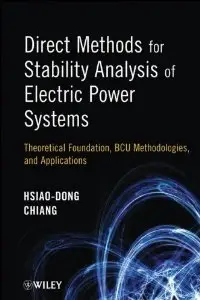Hsiao-Dong Chiang, "Direct Methods for Stability Analysis of Electric Power Systems: Theoretical Foundation, BCU Methodologies, and Applications"
English | 2010 | ISBN: 0470484403 | PDF | 494 pages | 4.5 MB
English | 2010 | ISBN: 0470484403 | PDF | 494 pages | 4.5 MB
Learn how to implement BCU methods for fast direct stability assessments of electric power systems
Electric power providers around the world rely on stability analysis programs to help ensure uninterrupted service to their customers. These programs are typically based on step-by-step numerical integrations of power system stability models to simulate system dynamic behaviors. Unfortunately, this offline practice is inadequate to deal with current operating environments. For years, direct methods have held the promise of providing real-time stability assessments; however, these methods have presented several challenges and limitations.
This book addresses these challenges and limitations with the BCU methods developed by author Hsiao-Dong Chiang. To date, BCU methods have been adopted by twelve major utility companies in Asia and North America. In addition, BCU methods are the only direct methods adopted by the Electric Power Research Institute in its latest version of DIRECT 4.0.
Everything you need to take full advantage of BCU methods is provided, including:
* Theoretical foundations of direct methods
* Theoretical foundations of energy functions
* BCU methods and their theoretical foundations
* Group-based BCU method and its applications
* Numerical studies on industrial models and data
Armed with a solid foundation in the underlying theory of direct methods, energy functions, and BCU methods, you'll discover how to efficiently solve complex practical problems in stability analysis. Most chapters begin with an introduction and end with concluding remarks, making it easy for you to implement these tested and proven methods that will help you avoid costly and dangerous power outages.



